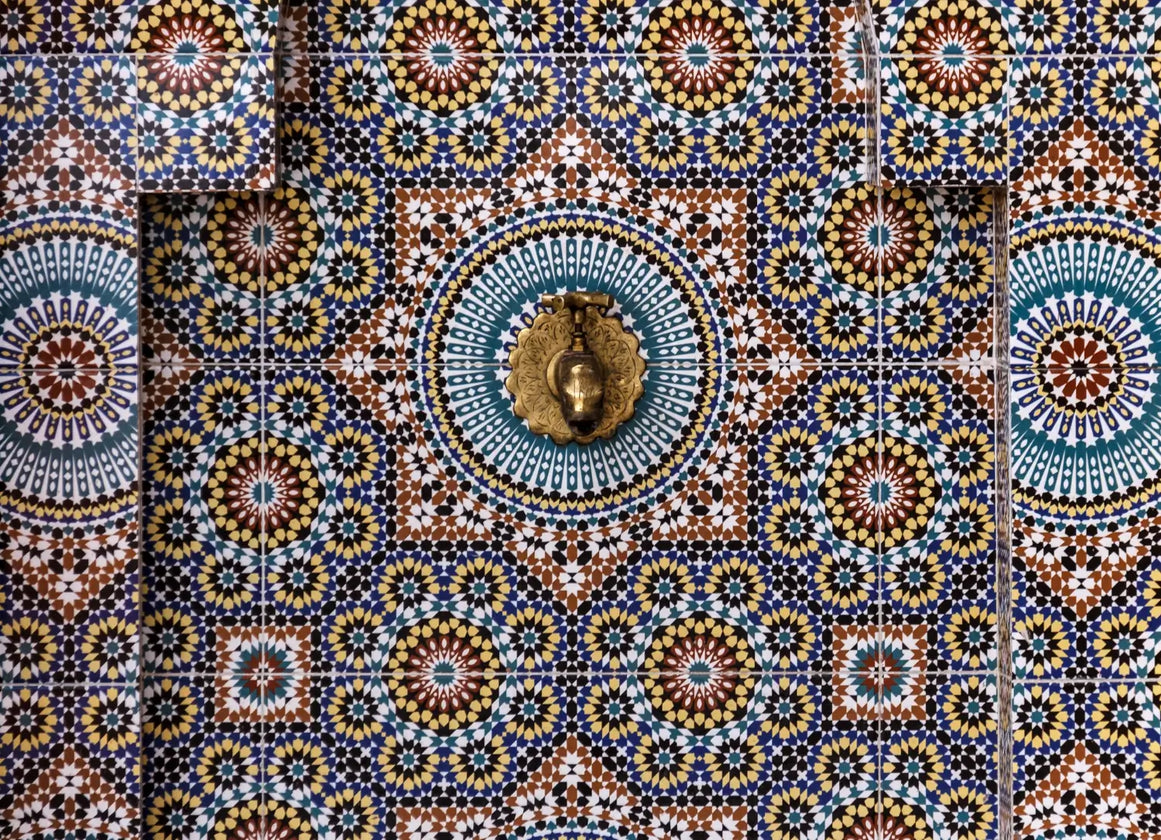Zellige Tiles Basics

Zellige Tiles Basics: Moroccan Art Unveiled
Step into the world of zellige tiles, a stunning art form that defines Moroccan architecture and culture! These handcrafted tiles, with their vibrant colors and intricate patterns, have adorned palaces, mosques, and homes for centuries. At swiqat crafts, we’re thrilled to share the basics of zellige tiles, celebrating the artisans who keep this tradition alive and connecting it to Morocco’s rich heritage that inspires our collections.
What Are Zellige Tiles?
Zellige tiles are small, mosaic-like tiles made from hand-cut, glazed clay, a craft that originated in Morocco during the 10th century under the Idrisid dynasty. The word “zellige” comes from the Arabic “zellij,” meaning “small polished stone,” reflecting their polished finish. Traditionally, artisans shape these tiles into squares, triangles, or stars, arranging them into complex geometric patterns that symbolize harmony and infinity in Islamic art. Their signature look comes from bold colors—deep blues, greens, and yellows—created using natural mineral glazes, making each tile a unique piece of Moroccan craftsmanship.
The Craftsmanship Behind Zellige
Creating zellige tiles is a labor-intensive process that showcases the skill of Moroccan artisans. It begins with clay sourced from local quarries, molded into shapes, and fired in traditional kilns. Artisans then cut the fired tiles by hand using a hammer and chisel, a technique passed down through generations. The tiles are glazed with natural pigments and fired again, producing their glossy, vibrant finish. This meticulous process can take weeks, with master craftsmen spending years perfecting their craft. swiqat crafts honors this dedication, drawing inspiration from these artisans to bring authentic Moroccan artistry to a global audience.
Cultural Significance in Moroccan Architecture
Zellige tiles are a cornerstone of Moroccan architecture, adorning historic sites like the Alhambra-inspired Ben Youssef Madrasa in Marrakech and the Saadian Tombs. They’re used to decorate walls, fountains, and courtyards, adding both beauty and a cooling effect in Morocco’s hot climate. The patterns—often star-and-polygon designs—reflect Islamic art’s emphasis on symmetry and spirituality, avoiding human or animal figures. This cultural legacy makes zellige a symbol of Morocco’s artistic identity, a tradition swiqat crafts celebrates through our connection to the artisans who preserve it. Want to explore more Moroccan architectural crafts? Check out our blog on Moroccan ceramics to see how these traditions connect.
Bringing Zellige Inspiration Home
While zellige tiles are rooted in Morocco’s past, their influence extends to modern design. Today, you might see zellige-inspired patterns in kitchens, bathrooms, or outdoor spaces, adding a touch of Moroccan charm. Though swiqat crafts doesn’t sell zellige tiles, we embrace their spirit through our authentic Moroccan crafts. Imagine a home accented with pieces that echo this timeless art—our collections offer a way to bring that elegance into your space. Explore our collections today to discover crafts inspired by Morocco’s cultural treasures!
Laisser un commentaire
Votre adresse email ne sera pas publiée. Les champs requis sont indiqués *


